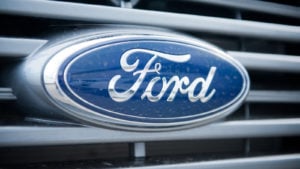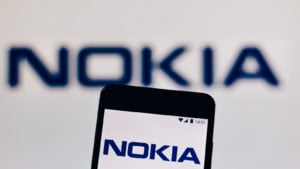If you’re looking to buy yourself a little pre-holiday investment gift for putting up with the novel coronavirus in 2020, forget penny stocks. Look to cheap stocks under $10 instead.
According to Finviz.com, there are 33 stocks currently trading at $5 or less with a market capitalization of $2 billion or more. However, if you double the qualifying amount to $10, your options increase more than threefold to 108 stocks.
That’s a vastly larger cohort of businesses to choose from, hopefully increasing the overall quality of the picks.
So, now the question becomes this: what other criteria should you use to select 10 cheap stocks to buy in November?
Well, I don’t know about you, but I’m going to try to spread the love across as many industries as possible. That means at least one stock from at least seven sectors. All of them will have market caps above $2 billion and trade at $10 or less at the time of selection.
And keep in mind — just because a stock trades below $10 doesn’t mean it’s a bad investment. It might not even mean it’s all that risky.
That said, I’ll try to select stocks with decent financials and minimal debt. So here goes.
- Kinross Gold (NYSE:KGC)
- Sirius XM Holdings (NASDAQ:SIRI)
- Ford (NYSE:F)
- Coty (NYSE:COTY)
- Ecopetrol (NYSE:EC)
- Atlas (NYSE:ATCO)
- Cronos Group (NASDAQ:CRON)
- CNH Industrial (NYSE:CNHI)
- Vereit (NYSE:VER)
- Nokia (NYSE:NOK)
Cheap Stocks to Buy: Kinross Gold (KGC)

Sector: Basic Materials
The price of gold is up almost 25% year-to-date (YTD). Naturally, gold producers have also done well. Toronto-based Kinross Gold has had a total return of over 73% in 2020 so far, improving its five-year annualized total return to over 30%.
That’s what a run on gold will do for your gold stock. And no matter who the ultimate winner of the presidential election is — I’m writing this as Americans are going to the polls — there’s bound to be a lot of volatility with stocks over the next few months.
While gold has had no tangible value since the gold standard ended in 1933, it sure is good to have when paper money seems to be worth less than what it’s printed on.
As for KGC stock itself, InvestorPlace’s Thomas Niel recently named it a gold stock to hold post-election. Niel writes:
“How much could Kinross be worth? Last month, BMO Capital’s Jackie Przybylowski upgraded shares to a ‘buy’ rating, giving the stock a $14.25 per share price target (the stock currently trades around $8.50 per share). The rationale behind the upgrade? Namely, the company’s decision to reinstate its dividend.”
So there’s a lot working in favor for this pick of the cheap stocks. On top of that, Kinross may also sell its gold mines in the Americas, which accounts for 56% of the company’s gold production. That alone provides investors with a potentially significant return on investment.
Sirius XM Holdings (SIRI)

Sector: Communication Services
On Oct. 22, Sirius XM CEO Jim Meyer suggested the company was making good progress getting Howard Stern to sign a new long-term contract. And while Stern’s rumored $120 million paycheck is a staggering amount, Stern is the satellite radio business. Without him, radio and Sirius doesn’t have near enough pull.
“Howard tells me he’s never been happier and our relationship with Howard has never been stronger,” Meyer said on the company’s most recent earnings call. “From my perspective we are very far along. But it is never done until it’s done. I am very confident we have an agreement to announce soon.”
Whether you like Howard Stern or not is unimportant. The man generates major cash for Sirius and SIRI stock. In the trailing 12-months, the company had free cash flow of over $1.6 billion on revenue of $7.9 billion, a 21% margin.
With a earnings yield of almost 4%, Sirius XM remains among the top cheap stocks under $10 to buy.
Ford (F)

Sector: Consumer Cyclical
For a long time, I had little confidence in Ford to dig itself out from its single-digit stock price.
The retirement of CEO Jim Hackett helped, though — as did putting chief operating officer (COO) Jim Farley in charge of the company. Farley’s time spent at Toyota (NYSE:TM) has made him a very effective auto executive who’s earned the right to take the wheel.
In my most recent article about Ford, I argued that “In the absence of any expectations, Ford is as cheap as they come.” Since late July, though, F stock is up about 12% and trading at its highest level since February of 2020.
InvestorPlace’s Mark Hake also recently suggested that Ford stock provides good value as its recovery takes hold. Hake writes:
“Barron’s recently reported that Benchmark analyst Mike Ward has a ‘buy’ rating on Ford and a $10 price target. He believes that the third-quarter earnings could act as a catalyst for the stock well into 2021.
“Improving North American markets, a positive mix — mainly with more truck sales — and improving credit metrics for buyers and the company are additional catalysts. He believes there will be a ‘tailwind for earnings into the second half of 2021.’”
In addition to this — judging by the Mustang Mach-E as well as the new Ford Bronco — the company’s vehicles are getting edgier and more attractive. That should lead to future sales growth once the pandemic is over.
At this point, the risk-to-reward appears reasonable for this pick of the cheap stocks. Only when Ford hits $10 does the entry point get a little riskier.
Coty (COTY)

Sector: Consumer Defensive
This global beauty company remains the ugly duckling of JAB Holding Company, Germany’s Riemann family’s private investment arm. JAB owns 60% of Coty, but earlier this year sold $1 billion of preferred shares to KKR (NYSE:KKR) as part of its strategic transformation.
If the preferred shares are converted to common, JAB’s voting power will drop by 10 percentage points to 50%, with KKR holding another 17%.
As part of the KKR deal, the company also hived off Coty’s Wella, Clairol, Opi, and Ghd brands into its own separate company, with KKR owning 60% and Coty the remaining 40%. The transaction provided Coty with $2.5 billion in net cash proceeds.
Finally, it hired industry veteran Sue Nabi as its CEO. Back in October, I included Nabi on an exclusive list of 10 women who are top-notch CEOs.
Needless to say, all these changes will impact COTY stock significantly. But I don’t think the Riemann’s like to lose very often. At some point, Coty will turn around and when it does, both JAB and KKR will reap the benefits.
If you invest in this cheap stock, so could you.
Ecopetrol (EC)

Sector: Energy
For the next of the cheap stocks, it’s time to head south, all of the way down to Colombia. That’s right — South America.
While I’m certainly not a fan of fossil fuels, it’s going to take several decades for the world to transition to renewable energy that can power our vehicles and heat our homes. In the meantime, companies such as Ecopetrol are a necessary evil.
Like many oil and gas companies, 2020 hasn’t been pretty for Ecopetrol. YTD, the company is down 50%, about the average return for its peers.
However, importantly, the state-controlled company remains profitable. Ecopetrol reported its third quarter results on Oct. 27 — earnings fell 72% to $224.2 million over a year ago. Meanwhile, its earnings before interest, taxes, depreciation and amortization fell a more modest 37% in the quarter to $1.38 billion. That made for an EBITDA margin of 43%, roughly equal to its margins in all of 2019.
So, even though business is much slower for the company in 2020, it’s well-positioned for a rebound in 2021.
Further, on the renewable energy front, Ecopetrol aims to add 300 megawatts (MW) of renewable energy by the end of 2022. Recently, the company signed a deal to build a 59 MW solar farm in Colombia, with construction expected to begin before 2021. Other wind and solar projects in the works could lead to an additional 192 MW of renewable energy over the next two years. That brings it very close to its stated goal, and makes EC stock’s future look a little bit brighter.
Forget Exxon Mobil (NYSE:XOM) and give Ecopetrol your serious consideration instead.
Atlas (ATCO)

Sector: Financial
Even though the number of publicly traded U.S.-listed stocks has dropped considerably over the past decade — between 1996 and 2016, the number fell by half — I’m often amazed how some companies are still unfamiliar to me.
In Atlas’ case, the corporation is a holding company that was created to own both Seaspan Corporation and APR Energy. The first owns 127 containerships that it leases to shipping companies, while the other provides specialized power solutions.
Trading in ATCO stock began in late February of this year. Since then, the company has lost roughly 10% of its starting value over the past eight months. But that doesn’t mean you should count this one of the cheap stocks out.
According to Atlas’ Q2 results, Seaspan accounted for roughly 84% of its over $363 million in revenue, with APR Energy accounting for the rest. That marked a 32% increase in revenue from a year earlier.
As for funds from operations (FFO), a key metric was $161 million in the three-month period that ended on June 30 — 76% higher than the same period a year ago.
The largest shareholder in Atlas, however, is Fairfax Financial (OTCMKTS:FRFHF), with an over 46% stake of the company. I recommended Fairfax back in September of 2019. But time hasn’t been good for the Canadian holding company. Its shares are down 37% over the past year. Value investors should be all over it.
Cronos Group (CRON)

Sector: Healthcare
If you’re considering an investment in cheap stocks dealing in cannabis — or looking into this Canadian cannabis company specifically — you might not want to check out Cronos’ InvestorPlace webpage. Right now, Louis Navellier gives it a “D” rating in his Portfolio Grader, with a recommendation to sell. What’s more, several other InvestorPlace contributors think betting on Cronos is a lost cause.
But down almost 17% year to date, I am not one of those people.
I believe — as fellow contributor Luke Lango does — that the company’s financial strength, along with the backing of Altria (NYSE:MO), provides shareholders with greater certainty than if it were an independent cannabis company.
Of course, it’s not been an easy two years since the Canadian federal legalization of recreational-use cannabis in October 2018. Because of that, having Altria in its corner will pay dividends for years to come. But shareholders will also have to remain patient as the industry continues to mature.
That’s especially true after all the troubles Altria has had with its 35% investment in e-cigarette maker Juul. The company paid $12.8 billion for its economic interest in 2018, more than what the entire company is valued at today.
However, Altria won’t give up on Cronos. That’s why investors should strongly consider CRON stock.
CNH Industrial (CNHI)

Sector: Industrials
It’s not been an easy year for this maker of agricultural and construction equipment. Still, though, CNH is a notable pick out of all the cheap stocks.
In March, CEO Hubertus Muhlhauser was shown the door, replaced by board chair Suzanne Heywood on an interim basis. Muhlhauser was in the top job for less than two years. While the company continues to search for a permanent chief executive, CNH remains committed to splitting the company in half.
Heywood also happens to be the managing director of Exor, the Agnelli family’s holding company and CNHI stock’s largest shareholder.
Interestingly, though, Muhlhauser was CEO when the plan to split the company into two separate businesses was hatched — one will include its commercial vehicles and powertrain segment, the other its agriculture and construction equipment businesses. On the plan, Heywood said, “The bold plan will lead to the creation of two new global leaders in their respective fields. The board of directors strongly supports this ambitious strategy and its confidence is underpinned by the rigorous work undertaken to formulate it.”
With Muhlhauser gone, that responsibility now lies with Heywood and the ultimate hire as CEO. Even given all the recent changes at CNH, I like the move. Splitting the company provides investors with an easier valuation analysis of both businesses.
Vereit (VER)

Sector: Real Estate
Vereit owns 3,820 properties worth an estimated $14.6 billion. The company leases more than 88.9 million square feet of space for retail (45%), restaurants (21%), office (17%), and industrial (17%) tenants across 41 different industries. Needless to say, VER has some impressive figures that make it stand out from the rest of the cheap stocks. Its top 10 tenants are a who’s who of American business.
Yet, the company was forced to cut its Q2 dividend in May to 7.7 cents from 13.75 cents in the first quarter, a 44% reduction in its payout.
And while Vereit has diversified beyond retail and restaurants, the pandemic has certainly hit a significant portion of its tenants, resulting in reduced rental revenue for the company. However, the Q2 dividend payout amounted to just 51% of its adjusted funds from operations (AFFO).
So, VER stock has got plenty of cash flow to get it through Covid-19. In fact, it’s rental situation appears to be getting better. On Sep. 28, the company announced that it had received 87% of rent for the second quarter — 92% of its July rent, 94% in August, and 95% in September.
Naturally, there’s an element of risk to investing in Vereit — especially with the pandemic — but it’s likely not nearly as risky as when the stock traded below $4 in early April. Once the economy recovers, this real estate investment trust (REIT) will be well-positioned to benefit.
Nokia (NOK)

Sector: Technology
Nokia’s new CEO, Pekka Lundmark, took over on Aug. 1 and reported his first quarterly results on Oct. 29. While revenues fell by 3% (excluding currency) in the third quarter, it did manage to increase its net profit by 14% to 305 million euros ($360 million) from 267 million euros ($315 million) a year earlier.
More importantly, it was the company’s “fifth consecutive quarter of solid free cash flow,” which suggests the pause in dividends could be lifted before the end of the year.
On top of that, Lundmark is aggressively pursuing 5G business and is willing to up Nokia’s investment to make that happen. During the Q3 earnings call, Lundmark said:
“Our financial performance in 2021 is expected to be challenging.
“We have lost share at one large North American customer [Verizon], see some margin pressure in that market, and believe we need to further increase R&D investments to ensure leadership in 5G. In fact, we have decided that we will invest whatever it takes to win in 5G.”
To date, Nokia has secured 104 5G commercial deals and launched 37 live networks. However, they are trailing both Ericsson (NYSE:ERIC) and Huawei.
NOK stock’s lost about 6% of its value since announcing its earnings on Oct. 29. If you’re risk tolerant on cheap stocks, that decline provides an excellent buy-on-the-dip opportunity.
On the date of publication, Will Ashworth did not have (either directly or indirectly) any positions in the securities mentioned in this article.
Will Ashworth has written about investments full-time since 2008. Publications where he’s appeared include InvestorPlace, The Motley Fool Canada, Investopedia, Kiplinger, and several others in both the U.S. and Canada. He particularly enjoys creating model portfolios that stand the test of time. He lives in Halifax, Nova Scotia.
On Penny Stocks and Low-Volume Stocks: With only the rarest exceptions, InvestorPlace does not publish commentary about companies that have a market cap of less than $100 million or trade less than 100,000 shares each day. That’s because these “penny stocks” are frequently the playground for scam artists and market manipulators. If we ever do publish commentary on a low-volume stock that may be affected by our commentary, we demand that InvestorPlace.com’s writers disclose this fact and warn readers of the risks.
Read More: Penny Stocks — How to Profit Without Getting Scammed
